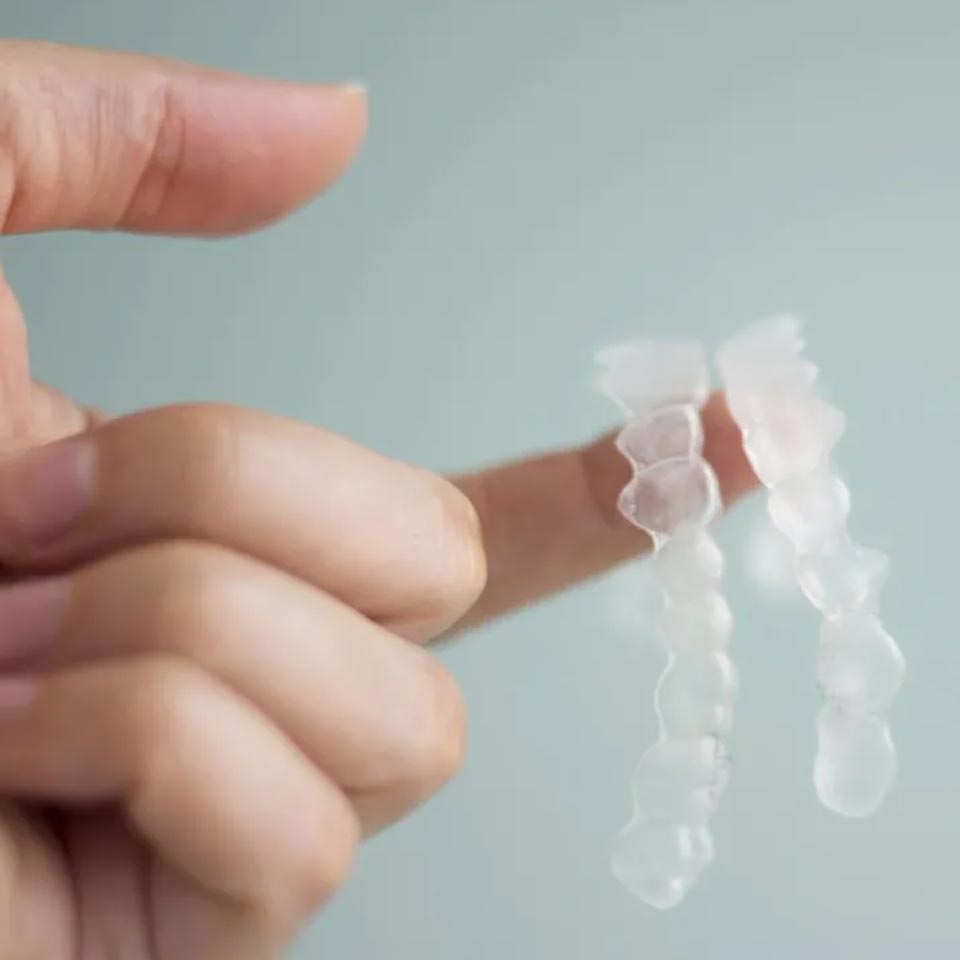Book Nowor Call718.461.0100
What are the Pros of Choosing Invisalign?
Aesthetics
Most people choose Invisalign because the aligner trays are inconspicuous, lacking the traditional brackets and wires found in traditional braces. Users can carry on with everyday activities without feeling self-conscious during orthodontic treatment.
No Dietary Restrictions
Treatment offers significant flexibility and especially when it comes to your diet. You can eat whatever you wish, and no foods are off the menu.
Oral Hygiene Is Easy
Because the aligners are removable, you simply take them out whenever you wish to brush and floss your teeth. There is no need to use special tools to clean around your teeth or to spend longer brushing and flossing your teeth than normal. While you will need to brush your teeth more frequently, this is true with all orthodontic treatment.
A More Comfortable Treatment
Invisalign aligners are made from smooth plastic and do not have any parts that can dig into gums, cheeks, or lips. Although there is some discomfort when teeth begin to move, this is common with all orthodontic treatment and is not unique to Invisalign.
Improved Safety during Sporting Activities
Invisalign aligners are removable when you play sports so you can wear your regular sports mouthguard. Unlike fixed braces, there is no need to worry that you could cut your tongue or lips on brackets or wires or that your braces could break while you play sports.
What are the Cons of Choosing Invisalign?
Excellent Compliance Is Needed
Invisalign aligners do require excellent compliance and good self-discipline. For treatment to be successful, you must wear your aligners for an average of 22 hours each day. Most people find this routine easy to follow, but some find it harder to commit to wearing their aligners continually.
Failure to commit to a routine of wearing your aligners can extend treatment by several months. Also, Invisalign aligners can easily be lost or thrown away accidentally, potentially increasing treatment time and costs.
Better for Treating Mild to Moderate Orthodontic Problems
Usually, Invisalign is best for treating mild to moderate orthodontic problems, including malocclusion and issues with overcrowding. More complicated bite problems are harder to treat effectively with Invisalign and braces could be a better choice. However, Invisalign does now use small buttons or attachments of tooth-colored resin that are fixed onto teeth, and these can help the aligners grip teeth more firmly and move them more precisely.
What are the Pros of Choosing Fixed Braces?
Excellent for Treating Complex Bite Problems
Fixed braces are often the best treatment for more complex bite problems and where intricate tooth movements are needed. Because the brackets are fixed individually onto teeth, they can move teeth far more precisely.
Traditional Braces Work Continually to Move Teeth
Invisalign aligners are removable for meals and beverages and oral care. Not everyone has the discipline to wear them for 22 hours each day. Because traditional braces are fixed onto the teeth for the duration of treatment, they are working continuously to reposition teeth accurately.
Fixed Braces May Be Marginally Cheaper
Traditional metal braces may be marginally cheaper than Invisalign aligners, but this is highly dependent on the complexity of treatment. Often the cost is comparable, or there is very little difference.
What are the Cons of Choosing Traditional Braces?
Highly Visible
Traditional fixed metal braces are highly visible, so everyone knows you are receiving orthodontic treatment. While some fixed braces have ceramic brackets and tooth-colored wires and which are less conspicuous, they still tend to be more noticeable compared with Invisalign.
Dietary Restrictions
Some foods are harder to enjoy while wearing braces or must be avoided entirely. With traditional fixed braces, it’s risky to consume hard or crunchy foods that could break brackets or wires. Sticky foods like candies can become stuck around brace components and are difficult to remove.
Oral Hygiene Takes Longer
Because fixed braces are often quite intricate, it is tricky to clean around all the brackets, wires, and other components thoroughly. It’s necessary to use special tools and to spend longer brushing and flossing your teeth thoroughly after each meal. If you fail to brush and floss your teeth thoroughly during treatment, it can cause plaque and tartar buildup, and may even lead to tooth decay and gum disease.
Brace Components Can Dig into Soft Tissues
Brace components such as brackets and wires can easily dig into or rub soft tissues uncomfortably, including your cheeks, lips, tongue, or gums. If these components break, they can easily poke into your cheeks or lips.
Invisalign offers a more aesthetically pleasing treatment that is potentially more comfortable, and it is easier to keep your teeth clean and healthy. There is a greater margin for error if the aligners aren’t worn as directed, which is why fixed braces are often a better choice for children. Fixed braces, although trickier to keep clean, can be better at correcting severe bite issues. The difference in price between fixed and removable braces is often negligible.
Schedule your appointment online
Book Nowor Call718.461.0100



